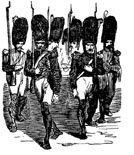
The Suppression of Popular Devotions In Today’s Catholic Church
MUCH LOST, NOTHING GAINED
We speak often of the changes in Roman Catholic worship since Vatican II: the exclusive use of the vernacular; the priest celebrating Mass facing the congregation; the ill-placed Sign of Peace; the replacement of Gregorian chant with “Kumbaya,” and more. What this Catholic litany (pun intended) often omits, however, is the virtual disappearance of a major component of Catholic public prayer, commonly called “devotions.” Today, when reportedly only about one of three Catholics in the United States attends obligatory Sunday Mass, it seems almost beyond belief that within recent memory great numbers would also gather in church in the evening on Wednesdays and Fridays or other weekdays, and often on Sunday afternoons, for regular and seasonal devotions. Has something better replaced devotions? Or have we properly outgrown them? This essay will consider the surprising answers to these questions.
Not long ago, when they were common, these weekday congregational prayers were most thickly clustered in the Marian months of May and October and the liturgical season of Lent. The format for May and October was standard and familiar: an opening Marian hymn; recitation of the rosary; the Loreto Litany; a brief period of silent prayer or another hymn in preparation for Benediction of the Blessed Sacrament; adoration of the Host in the monstrance; a closing hymn.
The Friday Lenten devotions were the Stations of the Cross, again followed by Benediction. Various ethnic groups had their distinctive practices as well. Devotions on Wednesday in Lent in my childhood took a form known to few Catholics in the United States but intimately familiar to our (first) Polish Pope, John Paul II. Known as Gozkie Zale, literally “bitter sorrow” (the first two words of the opening hymn) and translated as “Lamentations,” it consisted of a series of truly Jeremiah-like Slavic songs (St. Paul’s “groanings” might be a more apt description) concerning Christ’s Passion, during which the congregation would alternately kneel, stand, and sit with each sequential hymn. This devotion, too, concluded with Benediction of the Blessed Sacrament.
In addition to these May, October, and Lenten devotions, there were those held less regularly. At varying times of the year, parishes would hold “Forty Hours” devotions, focusing on Eucharistic adoration, with the climax a solemn procession and the sonorous chanting of the Litany of the Saints by dozens of priests convened from the surrounding area. There were also the occasional special novenas (a nine-day cycle of Masses and prayers), often centered on a parish’s patron saint and also involving the now all-but-abandoned litanies and processions, as well as Eucharistic adoration. In June, the Feast of the Sacred Heart was similarly commemorated.
You May Also Enjoy
Composure (being "really present -- with body, mind, and soul, with attention, reverence and love") must be willed and practiced. It is "attitude necessary" at Mass.
After attending various Masses and talking with parishioners, we came to the conclusion that parish success or decline depends on the homily of the pastor.
Regarding religious observance, obligation is a large part of the act itself, and the benefit. Both having the obligation and meeting it form us.

